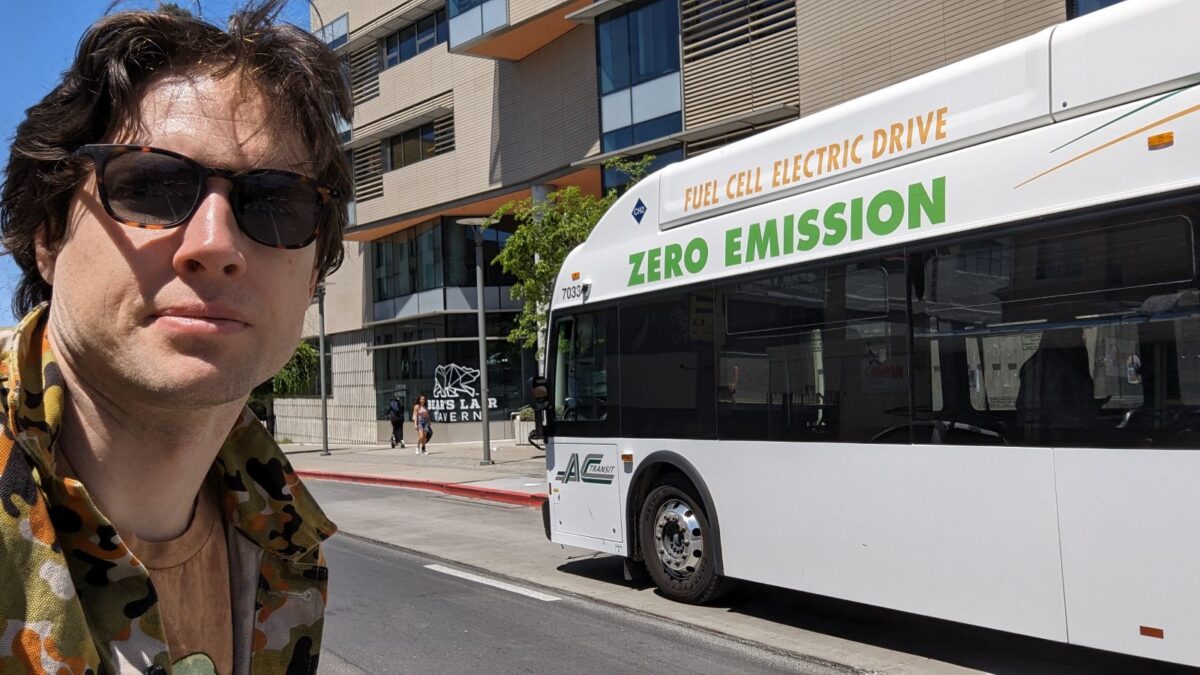
Hydrogen: The Key to Unlocking Green Energy Microgrids
September 16, 2024
Will Hydrogen Cars Ever Catch Up With Tesla?
December 6, 2024Why Hydrogen Cars Will Beat Gas Cars and EVs?

There is a reason why hydrogen cars have been a buzzword in the automotive world for a few years already. They promise a unique mix of environmental benefits and everyday practicality. Positioned at the intersection of innovation and usability, they present compelling reasons to consider them superior to gasoline or electric vehicles (EVs).
However, despite their potential, significant hurdles remain. This article delves into why hydrogen cars could be the future and the challenges they face for broader adoption.
Understanding Hydrogen Cars
Hydrogen cars, also known as fuel cell vehicles (FCVs), use hydrogen gas to generate electricity through a chemical reaction. This process occurs in a fuel cell stack, where hydrogen reacts with oxygen from the air to produce electricity, water vapor, and heat. Unlike gasoline vehicles that rely on internal combustion engines or electric cars with large batteries, hydrogen vehicles generate electricity on demand to power an electric motor.
Here’s a quick comparison:
| Feature | Hydrogen Cars | Gasoline Cars | Electric Vehicles |
| Power Source | Hydrogen fuel cells | Internal combustion | Battery |
| Emissions | Water vapor | CO2 and pollutants | Zero emissions |
| Refueling Time | 3-5 minutes | 3-5 minutes | 30 minutes to several hours |
Hydrogen cars are more efficient than gasoline vehicles regarding energy conversion. Hydrogen fuel cells typically achieve 60% energy conversion efficiency, compared to 20-30% for gasoline engines. While electric vehicles (EVs) lead with up to 90% efficiency, they’re limited by battery capacity and charging infrastructure.
Hydrogen cars offer a balance, providing substantial range and quick refueling capabilities.
Environmental Benefits
Hydrogen cars eliminate tailpipe emissions and use renewable resources for hydrogen production, reducing their carbon footprint. Traditional gasoline vehicles emit CO2 and other pollutants, contributing to air pollution and climate change. Electric cars, while zero-emission during operation, have a complex battery manufacturing process that raises environmental concerns.
Considering the entire lifecycle, hydrogen cars have a comparatively lower environmental impact. Although early hydrogen production relies on natural gas, the growth of green hydrogen, produced through electrolysis using renewable energy, promises a more sustainable future. EVs, despite zero emissions during use, face criticism for battery disposal and resource-intensive manufacturing.
Hydrogen Cars Offer Quick Refueling Times, Longer Driving Range
Time efficiency is a significant advantage of hydrogen cars. Refueling a hydrogen vehicle takes about 3-5 minutes, similar to filling a gasoline tank. In contrast, EVs require 30 minutes to several hours to charge, depending on the station’s capabilities. This quicker refueling allows hydrogen vehicles to fit more seamlessly into busy lifestyles, making long trips less cumbersome.
Hydrogen vehicles excel in range. Models like the Toyota Mirai offer around 400-500 kilometers on a single tank, comparable to gasoline cars and surpassing many EVs. This extended range, combined with fast refueling, positions them as practical for daily commutes and long-distance travel alike.
Current State of Hydrogen Infrastructure
Numerous regions are investing in hydrogen fueling infrastructure to support the expanding fleet of hydrogen cars. Countries like Japan, Germany, and the U.S. are leading the way with established hydrogen stations, though they remain concentrated in urban areas. As of 2022, the U.S. had fewer than 100 public hydrogen stations, primarily in California. In Germany, there are around 90 operational stations with plans for further expansion.
Building hydrogen fueling stations is costly, with each station costing up to $2 million. Expanding the infrastructure requires substantial investment and international cooperation for a cohesive network. The lack of hydrogen stations limits the current usability of hydrogen vehicles. Estonia has only a few hydrogen cars, as the first refueling station is yet to open. Overcoming these logistical and financial challenges is crucial for broader adoption.
Economic Analysis: Cost Challenges
Hydrogen production is currently cost-intensive. Most hydrogen today is produced using natural gas in a process called steam methane reforming, which is energy-intensive and emits CO2. Green hydrogen production, which uses electrolyzers powered by renewable energy, offers a cleaner alternative but remains more expensive. According to the International Renewable Energy Agency (IRENA), the price of green hydrogen could drop to $1.5/kg by 2030 with appropriate investment and technological advancements.
Market dynamics could shift to favor hydrogen as economies of scale reduce costs. Projections suggest hydrogen fuel will become more cost-competitive with gasoline and electricity over the next decade. Government incentives, carbon pricing, and subsidies are essential to offset initial high production costs, making hydrogen cars financially viable for consumers.
Innovation and Research in Hydrogen Technology
Continuous innovation is crucial for the success of hydrogen vehicles. Significant research focuses on producing hydrogen more efficiently, developing high-capacity and safe storage solutions, and improving fuel cell durability. Innovations in catalysts and electrolysis can lower production costs and increase adoption.
Automotive giants like Toyota, Honda, and Hyundai are leading the charge in hydrogen car development. For instance, Toyota’s Mirai and Honda’s Clarity Fuel Cell are commercially available hydrogen cars, while Hyundai’s Nexo is adding variety. These companies also invest in infrastructure and technology partnerships to support the growth of hydrogen mobility globally.
Hydrogen Storage and Usage
Safety is paramount in hydrogen cars, given hydrogen’s high flammability. Hydrogen vehicles use robust, high-pressure tanks to store hydrogen safely. These tanks undergo rigorous testing, including fire, burst, and crash tests, ensuring their reliability in varied conditions.
Additionally, hydrogen disperses quickly in the event of a leak, reducing the risk of fire compared to gasoline.
Performance and User Experience
Hydrogen cars offer a driving experience similar to electric vehicles—smooth, quiet, and responsive. The Toyota Mirai, for instance, accelerates quickly with a seamless power delivery that enhances driving pleasure. Moreover, hydrogen cars perform reliably in diverse weather conditions, from freezing winters to scorching summers, making them versatile contenders in the market.

Hydrogen vehicles boast impressive ranges, typically between 400-500 kilometers, thanks to their efficient fuel cells, comparable to modern gasoline vehicles and surpassing many EVs’ ranges. This extended range combined with rapid refueling positions hydrogen cars as practical options for everyday use and long-distance travel.
Broader Impacts and Applications
Hydrogen technology is not limited to passenger cars. It’s being explored for heavy-duty applications like trucks, buses, and industrial machinery. Companies like Nikola and Hyundai are developing hydrogen-powered trucks, while cities worldwide deploy hydrogen buses to reduce urban pollution. These applications showcase hydrogen’s versatility and potential to decarbonize multiple transportation sectors.
Hydrogen vehicles can significantly improve urban air quality by eliminating tailpipe emissions. Unlike gasoline cars that emit harmful pollutants contributing to smog, hydrogen vehicles only emit water vapor. This transition can lead to healthier, cleaner cities with reduced respiratory and cardiovascular health issues.
If widely adopted, hydrogen cars could transform the automotive industry, affecting supply chains and job markets. New opportunities in hydrogen production, fuel cell manufacturing, and infrastructure development could stimulate economic growth and create specialized jobs, albeit with a shift from traditional roles linked to gasoline vehicles.
Policy and Public Perception
Government policies play a pivotal role in the adoption of hydrogen cars. Subsidies, incentives, and regulations supporting green hydrogen production and hydrogen infrastructure development are crucial. Countries like Japan and Germany are leaders in this field, offering financial incentives and regulatory support for hydrogen vehicle adoption and infrastructure expansion.
Public perception is a critical factor. Many people remain skeptical about hydrogen technology due to unfamiliarity and perceived safety concerns. Increasing awareness and education about hydrogen cars’ benefits and safety can drive acceptance. Test drive events, public demonstrations, and positive media coverage can help dispel myths and showcase hydrogen cars’ viability.
Final Thoughts on Hydrogen Cars
Hydrogen vehicles are emerging as a promising alternative to gasoline vehicles and electric cars, blending ecological benefits with practical convenience. However, significant challenges—particularly in infrastructure and cost—must be addressed to achieve widespread adoption.
Still, continual innovation, supportive government policies, and growing market viability provide a hopeful outlook for hydrogen’s place in the future of transportation. As hydrogen technology advances, it may offer a sustainable solution that balances efficiency, environmental consciousness, and user convenience..



